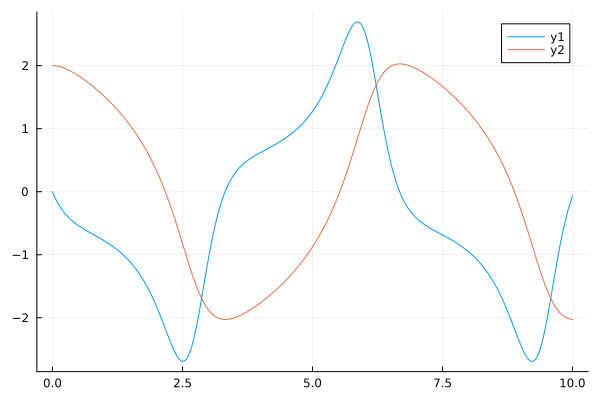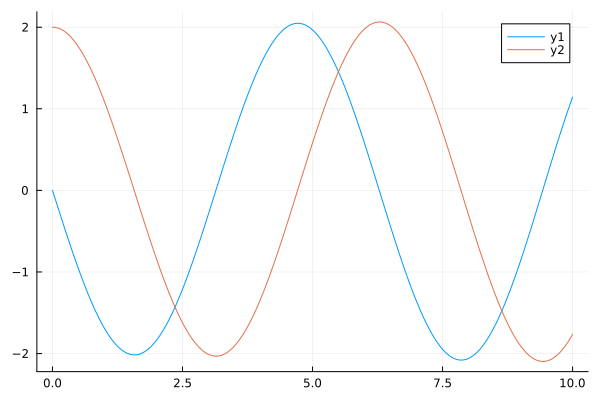The Van der Pol oscillator
This example shows how to model the second-order Van der Pol differential equation (VDP) in Engee. In dynamics, the oscillator is non-conservative and has nonlinear attenuation. At high amplitudes, the generator dissipates energy. At low amplitudes, the generator generates energy.
The oscillator is given by a second-order differential equation:

where:
- x is the position relative to time.
- t - time
- Mu — attenuation.
The VDP generator is used in biological and physical sciences, including in electrical circuits.
Next, let's move on to the implementation – we'll declare the model launch function and connect the necessary libraries.
using Plots
function run_model(name_model)
Path = (@__DIR__) * "/" * name_model * ".engee"
if name_model in [m.name for m in engee.get_all_models()] # Checking the condition for loading a model into the kernel
model = engee.open( name_model ) # Open the model
model_output = engee.run( model, verbose=true ); # Launch the model
else
model = engee.load( Path, force=true ) # Upload a model
model_output = engee.run( model, verbose=true ); # Launch the model
engee.close( name_model, force=true ); # Close the model
end
return model_output
end
Let's run a model with several options for the Mu value. Next, in the figure, you can see the model that we made based on the formula described above.
.png)
The attenuation coefficient is equal to one
Let's set the Mu and run the model, and then analyze the aggregated data.
Mu = 1;
run_model("vdp")
sleep(5)
collect(simout)
# Speed
v = simout["vdp/Integrator.1"];
v = collect(v);
plot(v.time, v.value)
# Position
p = simout["vdp/Integrator-1.1"];
p = collect(p);
plot!(p.time, p.value)
As we can see from the resulting graph, at Mu = 1, the VDP generator has nonlinear attenuation.
The attenuation coefficient is zero
Let's set the Mu and run the model, and then analyze the aggregated data.
Mu = 0;
run_model("vdp")
sleep(5)
collect(simout)
# Speed
v = simout["vdp/Integrator.1"];
v = collect(v);
plot(v.time, v.value)
# Position
p = simout["vdp/Integrator-1.1"];
p = collect(p);
plot!(p.time, p.value)
Analyzing the graph, we can conclude that at Mu = 0, the VDP generator has no attenuation, energy is conserved, and the differential equation itself takes the following form:
.png)
Conclusion
In this example, we modeled the second-order Van der Pol differential equation in Engee and looked at how it works with different values of the attenuation coefficient.

